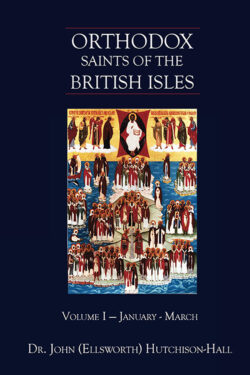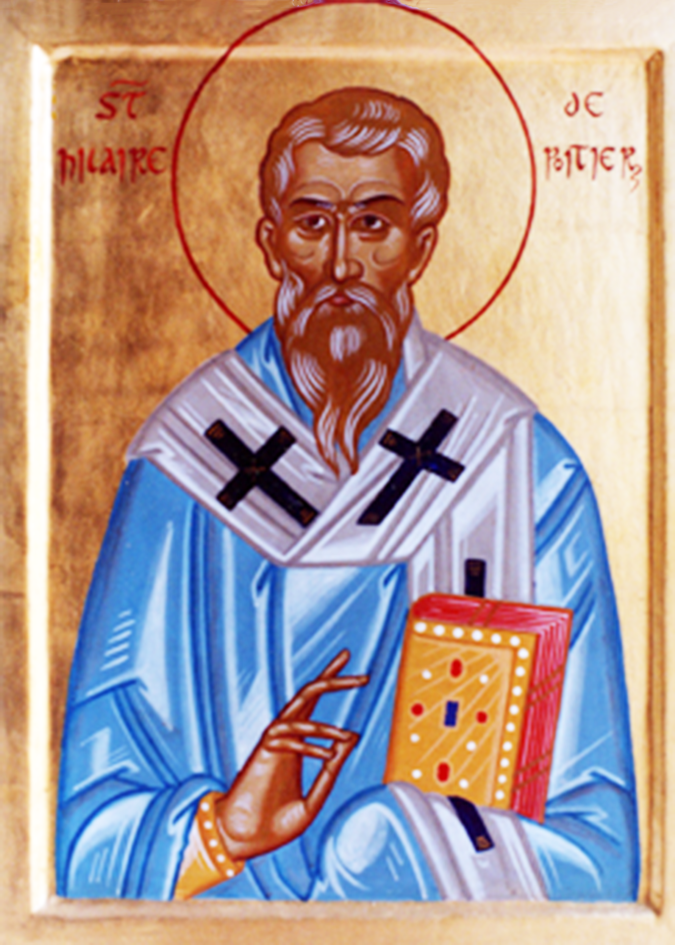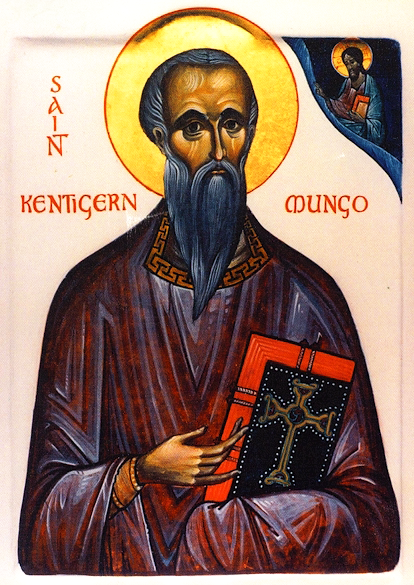
Orthodox Saints of the Pre-Schism
See of Rome
13th January 2024 (NS) — 31st December 2023 (OS)
BARBATIAN, (Fifth Century), a priest from Antioch who, whilst in Rome on a mission, found himself advising the Empress Placidia Augusta. She was so impressed by his wisdom and council that she persuaded him to relocate to Ravenna, building a monastery for him near the imperial court.
COLUMBA of SENS, one of a group of Christians who fled their native Spain to avoid being denounced as Christians. However, they were all martyred near Meaux (273) during the reign of Aurelian. Her relics were enshrined at Sens, but were destroyed by the Huguenots in the sixteenth century.
DONATA, HILARIA, DOMINANDA, NOMINANDA, PAOLINA, PAULINA, ROGATA, RUSTICA, SATURNINA, SEROTINA, and COMPANIONS, (Date Unknown), an unknown number of Roman women martyred in an early persecution, of whom only the names of these ten are known. Their relics are enshrined in the catacombs of the Via Salaria in Rome.
MELANIA the YOUNGER and PINIAN, wealthy Roman nobles, St. Melania was the granddaughter of her namesake Melania the Elder (8th Jun) and married to St. Pinian. Following the repose of their children, and to escape the coming Visigoth onslaught, they fled to Tagaste in Africa Byzacena, where they had estates. There they became friendly with St. Augustine of Hippo (28th August), taking vows of celibacy, they renounced the world, disposed of land and chattel, and built two monasteries for St. Augustine. They then went to Jerusalem, entered monasteries, where they spent the rest of their days. St. Pinian reposed circa 438, and St. Melania circa 439.
PETER of SUBIACO, an Abbot of Subiaco who was blinded and imprisoned for defending the rights of the Abbey. St. Peter reposed in prison in 1003 from torture and maltreatment and is considered a martyr.
SABINIAN and POTENTIAN, St. Sabinian is generally considered to have been the first Bishop of Sens, and St. Potentian his successor. Both were martyred circa 300.
SILVESTER, St. Silvester was the thirty-third Pope of Rome serving from 314 until his repose in 335. During his pontificate, he helped with the conversion of St. Constantine the Great (21st May); supervised the building of the Basilica of St. John Lateran and Old St. Peter's Basilica. It was also while St. Silvester was pontiff that the Arian heresy first came to the fore; leading to the First Œcumenical Council in Nicaea (325), to which he sent legates.
Troparion of St. Sylvester, Pope of Rome
Tone IV
You appeared to your flock as a rule of faith,
An image of humility and a teacher of abstinence.
Because of your lowliness Heaven was opened to you;
Because of your poverty, riches were granted to you.
O holy Pope Sylvester, pray to Christ our God to save our souls!
Kontakion of St. Sylvester, Pope of Rome
Tone II
The Trinity delights in you, O holy bishop Sylvester!
You are divine thunder, a spiritual trumpet
A planter of the Faith,
and destroyer of heresies.
As you ever stand with the angels, entreat Christ without ceasing for us all!
STEPHEN, PONTIAN, ATTALUS, FABIAN, CORNELIUS, SEXTUS, FLOS, QUINTIAN, MINERVINUS, and SIMPLICIAN, (Date Unknown), a group of Christians martyred in Catania in Sicily. Of the group, only the names of these ten are known.
Get your copy of Orthodox Saints of the British Isles today.
Available at Amazon or your favourite e-bookstore.
AGRECIUS (AGRITIUS), the fourth Bishop of Trier (in present-day Rhineland-Palatinate, Germany). Whilst it is known that St. Agrecius was a participant in the Council of Arles, there are also many pious stories about his life, including his assistance to Empress St. Helen (21st May) in acquiring the Relics of Trier, chief of which is the Holy Coat of Trier. However, these are based, at least partly, upon Altmann of Hautvillers ninth century Vita Helenæ which is, at best, of doubtful accuracy. St. Agrecius reposed circa 333 and was succeeded by St. Maximinus (29th May).
ANDREW of TRIER, there are no reliable facts about St. Andrew extant. He has been described as the twelfth Bishop of Trier (present-day Rhineland-Palatinate, Germany), and as having reposed circa 235. Considering the first historically verified Bishop of Trier is St. Agrecius (vide supra) who flourished in the early fourth century, there is no possibility that the twelfth bishop could have flourished a century earlier. St. Andrew has also been described as a martyr in some martyrologies, though there is no evidence for this either. Nevertheless, St. Andrew has been venerated in the See of Trier, and beyond, since time immemorial.
BERNO, considering the impact St. Berno had on Western Monasticism, the lack of information on his early life is rather astonishing. St. Berno received monastic tonsure at the Abbey of St. Martin in Autun, later he was appointed Abbot of the Abbey of Baume-les-Messieurs in the French Jura; which had fallen into such a state of disuse, that he is considered to be the Abbey’s second founder. Following his success at Baume, St. Berno was called in 910 to serve as the first Abbot of the Abbey of SS. Peter and Paul of Cluny. With the cooperation of the benefactor of the abbey, William I, Duke of Aquitaine, he laid the foundation for the great Cluniac Reforms, which left an important legacy for monasticism in the Western Church. St. Berno retired as Abbot of Cluny in 926 and reposed the following year.
ELIAN (EILAN, ALLAN) ap ERBIN, (Sixth Century), he is believed to have been born in Cornwall, and was a member of the family of St. Ismael (16th June). The towns of Llanelian in Anglesey and Llanelian in Clwyd are named in his honour, and St. Allen’s church in Cornwall is dedicated to him.
ELIAN AP ERBIN, (Fifth Century), there are no certain details on this saint extant, aside from his appearance on some Welsh Calendars. It is possible that he is the same saint as the St. Eloan, another fifth century saint, whose Feast is also kept on 12th January (vide infra).
ELOAN, (Fifth Century), there is no information on this saint extant, and it is quite possible that he is the same as St. Elian ap Erbin, another fifth century saint, whose Feast is also kept on 12th January (vide supra).
ENOGATUS (ENOGAT), an Abbot of the Abbey of Saint Meen in Saint-Méen-le-Grand in Brittany, and later the seventh Bishop of Aleth in Brittany. St. Enogatus reposed in 631.
ERBIN (ERVAN, ERBYN, ERME or HERMES), a Cornish saint who most likely lived in the fifth century. There are churches dedicated to him and his name appears in several Calendars. It appears that he was related to one of the Cornish or Devonian chieftains of his time. For reasons unknown, his name has sometimes been spelled Hermes, confusing him with the ancient martyr of that name.
GUSEMINDUS and SERVUSDEI, two of the group of forty-eight Christians, who were martyred in Córdoba between 851 and 859 during the reign of Emir Abd ar-Rahman II (r. 822–852), and are collectively known as the Martyrs of Córdoba. St. Gusemindus was a priest, and St. Servusdei a monk. Their martyrdom is dated 852.
HILARY of POITIERS, born in Poitiers to a pagan aristocratic family. St. Hilary’s private studies led him to embrace Christianity. His piety and holiness of life resulted in his election to the See of Poitiers, even though he was married and had children, including St. Abra (12th December). With his wife’s consent, she and St. Hilary separated and in 353, St. Hilary was consecrated Bishop of Poitiers. Soon after his consecration, St. Hilary began the fight against Arianism, for which he is known even to this day. The Arian Emperor Constantius II (r. 337–361) exiled St. Hilary to Phrygia in Asia Minor, but this only left him with more time to write and fight against the heresy, and afforded him the opportunity to become acquainted with Eastern theologians as well. Under, what turned out to be, the mistaken assumption that St. Hilary would be less trouble if he was primarily occupied with pastoring his See, Constantius recalled St. Hilary to Poitiers. Alas, St. Hilary remained a defender of the true faith, and not only redoubled his efforts in the fight against Arianism, St. Hilary also introduced Eastern theology to the Western Church. St. Hilary spent the rest of his life in the See of Poitiers, reposing in 360.
KENTIGERN MUNGO, Our father among the Saints Kentigern of Glasgow (in Latin: Cantigernus and in Welsh: Cyndeyrn Garthwys or Kyndeyrn), also known as St. Mungo, was a late sixth century missionary to the Brythonic Kingdom of Strathclyde. St. Kentigern is venerated as the Apostle of what is now northwest England (including Cumbria and the Lake District) and southwest Scotland, and is a patron saint of Glasgow.
What we know of this saint comes from a twelfth century Life of questionable reliability. It seems he was a grandson of a British prince in Southern Scotland and raised by St. Serf (1st July) in a monastic school at Culross on the Firth of Forth. He was consecrated the first Bishop of the Britons of Strathclyde and founded the Church of Glasgow. Driven from Strathclyde by persecution, he went to Wales, where he is believed to have founded St. Asaph monastery, and then to Cumbria. He eventually returned to Strathclyde where he reposed in 612; his reputed tomb stands in the cathedral.
MARTYRS of ROME, a group of forty soldiers who were martyred in 262, on the Via Lavicana in Rome during the reign of Emperor Gallienus (r. 253–268).
POTITUS, (Second Century), according to the Roman Martyrology, St. Potitus was a martyr who after great tortures was beheaded in Sardinia during the reign of Emperor Antoninus (r. 138–161).
VIVENTIUS, a hermit in the Holy Land who, following ordination to the priesthood, travelled through Europe, settling in Gaul. There he worked with St. Hilary of Poitiers (vide supra) in combating the heresy of Arianism. St. Vivetius reposed circa 400.
Prior to the Schism the Patriarchate of Rome was Orthodox, and fully in communion with the Orthodox Church. As Saint John of Shanghai and San Francisco +1966 said “The West was Orthodox for a thousand years, and her venerable Liturgy is far older than any of her heresies”.
Details of British Saints excerpted from Orthodox Saints of the British Isles.
Details of continental saints from these sources.
In many cases there are several spelling versions of the names of saints from the British Isles. I use the Oxford Dictionary of National Biography version as the primary version with the more prevalent version in parenthesis e.g. Ceadda (Chad) of Lichfield.





